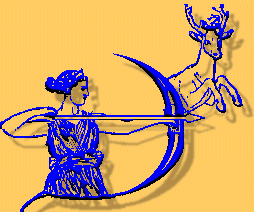 |
||||||||||||
 |
||||||||||||
| History and Myths | ||||||||||||
 |
||||||||||||
|
What? You want to know the history of Leros? Well that takes longer than a mortal life but I will try to cut it short for you... hmmm let me think of when it all started... at first there was Chaos... then came light... etc etc.. Then God decided to take up painting lessons and in his infinate wisdom came up with one of his best artworks! The Aegean islands! He took special attention with one of them specifically in the cluster of the Dodekanese and decorated it with hills and valleys and beauty best left described by the most competent of poets. Wait a minute! Maybe I can borrow the words of another Lerian, Pherecydes of Leros, a good friend to all Lerians and a great logographer and mythographer.
|
||||||||||||
|
Pherecydes of Leros lived around 450s BC. He spent the greater part of his working life at Athens, and so he was also called Pherecydes of Athens. His great treatises, a history of Leros, an essay On Iphigeneia, On the Festivals of Dionysus are all lost, but numerous fragments of his genealogies of the gods and heroes, originally in ten books, written in the Ionian dialect to glorify the ancestors in the heroic age of his 5th century patrons, have been preserved. He modified the legends, not with a view to rationalizing them, but rather to adjust them to popular beliefs. Anyway as Pherecydes put it in the Lost Dialogues by Michael Katz: The name "Leros" in Ancient Greek means flat. Relatively to the rest of Greece the island is indeed quite flat. Anyway back to our story. The island although beautiful and abandunt of wild life was well hidden away from the eyes of mortals until Artemis the godess of hunting found it and made it her home away from home. Thus she became the first legaly registered inhabidant of the island (she later got a temple built to honor her). After a while she got bored hunting all alone so she brought some good friends to party and they liked it there so they stayed forming the very first village. With a celebrity such as Artemis on the island, the word spread and soon the population reached 1000. Human traces on the island have been detected at Partheni and show trace evidence of human life there back to the Neolithic period. This was an entire settlement and has been dated from 8000 to 3000 BC. Carians, Leleges, Phoenicians and Cretans (led by Radamanthys, brother of King Minos), were its first inhabitants. The Dorians reached Leros and conquered it. The poet Homer mentions Leros taking part in the Trojan War along with Kalymnos and later the historian Herodotus mentions its close political and commercial ties with Miletos. The island was dedicated to Artemis, and it has always had a metriarchical society. In other words Women rule and property is given to the first born daughter rather than the son! But I am loosing the plot again... back to our story! I am confident Leros has its part to play in the Delian League but the sure thing is that after the Persian Wars Leros became part of the Athenian Alliance. On his campaign east, Alexander the Great also passed through Leros. The funerary steles and coins from that period found on the island support this. Plutarch also notes Leros’ importance as a hub for shipping when referring to the captivity of Julius Ceasar on the neighboring island of Farmako. Moving swiftly on in times: Constantine the Great, founder of Constantinople (Istanbul) and builder of the Byzantine Empire brought Leros into his empire by incorporating it into the Theme of Samos. In 1314 Leros was occupied by the Knights of St. John of Rhodes (which see) whom governed the island until 1523 when the Ottoman Turks took command of the entire Aegean and claim Leros as part of their empire. During the Greek revolution for independence in the early 1820 Lerians were amongst the first Greeks to rise to the task. Despite their sacrifises and victories, in 1830 all the Dodecanese were ceded to Turkey by the London Protocol in exchange for Euboea. Then, during the period 1912- 1943, the island was taken over by the Italians. During the waning years of WWII, with the help of the Greek "Sacred Battalion", Leros was liberated. In 1948 Leros, along with the rest of the Dodecanese islands, was annexed by Greece. During the WWII a hospital for lepers was built, in 1970s the junta regime sent dissidents till 1974. Visit the Churches page to see some excellent paintings made by the political prisoners of that period. In more recent times the islands history was overshadowed by the stories of the mental institution in Lakki and Lepida. Thankfully and with the help of the EU the situation has changed from what it used to be in the 80's. Today the major income of the island is generated through Tourism, Fishing, and the Hospital. The current population is around 8000 inhabitants. |
||||||||||||
|
[Home] [Introduction] [Leros Map] [Leros Faq] [Island History] [Photo Gallery] [Leros Churches] [Videos] [Culture of Leros][Rodon Hotel] [Castle View Studios] [Ouzeri] Links: [ Interesting] [Dodecanese] [Leros] Guestbook: [View] [Sign] Site: [Updates] [Copyright] [Privacy] [Contact] |
||||||||||||
|
|
||||||||||||
|
[Back]
|
[Top]
|
|||||||||||